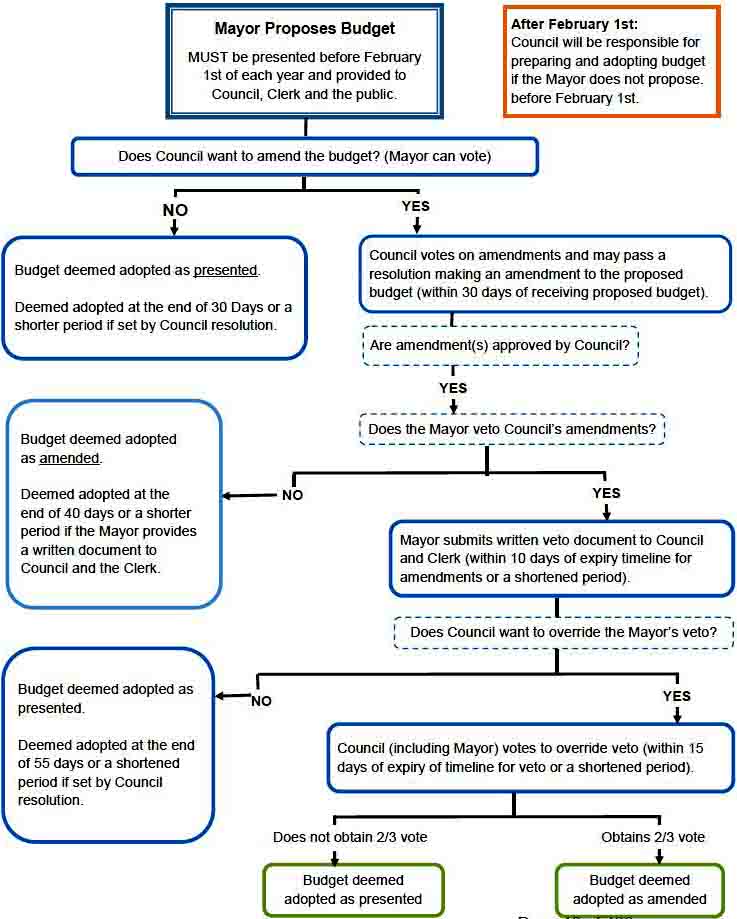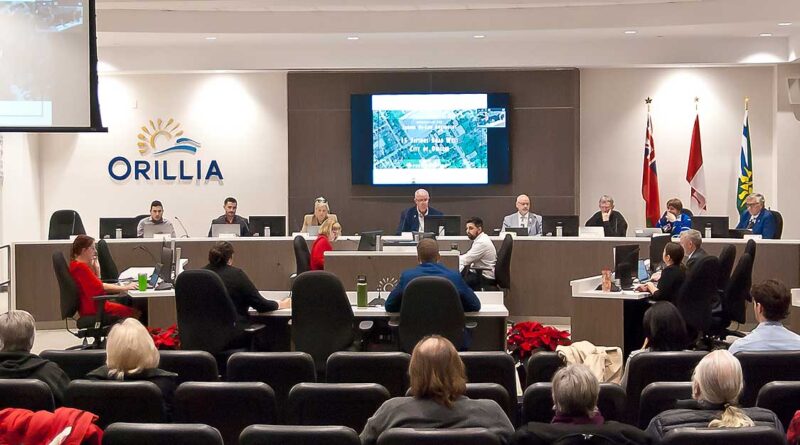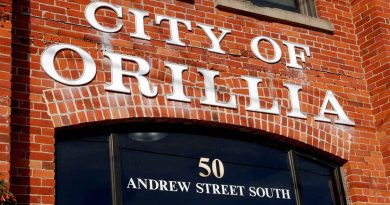Council Preview – 2026 Budget
By John Swartz
Monday, June 23rd’s Orillia council agenda includes a special meeting of council for the 2026 budget preparations, so the start time will be noon instead of 2 p.m.
Despite a major change in how the budget is prepared, which puts the authority for the budget proposal in the hands of the Mayor rather than administration proposing to council, practice in recent years has been to have a budget meeting in June so council can give some direction according to their priorities. There has also been a budget meeting in September to bring more detailed questions to council before the budget proposal as presented in November.
A key document in the budget meeting agenda is an outline of budget meeting dates. Until this year the entire budget was presented at once, deliberated, and voted on all in the month of November. This time around the budget is being broken into three parts the capital budget, the operating budget, and what is being called the service partners (OPP, County, health unit] budget.
They will be made public at three different times; capital on September 22, operating on October 20, and service partners on November 13. The meeting dates to discuss those budgets publicly will be one week later.
This makes sense in a few ways. Getting the capital part of the budget done earlier lets staff go to tender for projects ahead of other municipalities which could result in better pricing and more desirable contractors bidding on projects. Though the service partners part won’t be done any earlier, council usually sets those budgets by estimate and quite often have to revise the figures when the service partners submit their budget requests to the city, which sometimes doesn’t happen until March or April.
In the past each specific change from the previous year’s budget and new budget item proposals would be discussed and accepted or denied that meeting and be sent to a regular council meeting in January to be formally adopted.
Now, the new method requires council to submit changes they wish to make within the next week, to be followed by another special meeting a week after that. The Mayor then has another week to accept or veto council’s decision, and then council gets another special meeting if they want to override a veto.
The net result, for example with the capital budget, means the budget won’t be settled until mid-November. The operating budget will drag out until mid-December and the service partner budget to the first week of January.
And with all of that council has to petition for those additional meetings, the same as they had to do to get a meeting about the strong mayor powers imposed on the city by the province.
It looks like anyone trying to follow along is going to need a scorecard just to keep track of the meetings and what those meetings are about. From the perspective of someone who needed a few years to completely understand the budget process, this new approach appears designed and destined for confusion about what just happened.
The foundational shift this year is administration prepares budget at the Mayor’s direction, rather than council’s direction. council retains the authority to set tax ratios and user fees, but the Mayor now has the ability to amend the budget at any time after it’s adopted to, for example, raise taxes.
Staff prepared this handy flowchart to help make sense of the new process.

10–Year Capital Plan
More than a decade and a half ago the City created a 10 year capital plan, which is a good thing because previously major capital projects (roads, water and sewer, new facilities, etc.) tended to occur according to pet priorities of council or momentary visibility of deficiencies.
The point of the plan was to investigate lifespans of tangibles and intangibles according to data from a variety of sources regarding expectancies. In other words people have figured out how long a newly paved stretch of road will last before it needs replacing. This is contrasted with the ability to pay for capital projects.
The plan is better than no plan. The Laclie Street project (more below) is a good example. Staff had it on the schedule to be addressed, it was dumped from the list mainly because of its cost and the pressing need of doing other road work, until the cost of not doing the project (granted intangible, but no less important) were pointed out and it was put back on the order list and included in the 10-and year plan. Of course, staff had to rejig the plan twice to take the project out and put it back in.
It’s a useful document because staff can narrow their focus on immediate projects. For example, if you know a particular sewage pumping station will require refitting and major maintenance of the apparatus and housing in nine years, there is no sense to devoting attention to it now. Of course, unplanned failure of any capital asset will upset the plan. Case in point is the ice storm, the cleanup of which is causing problems with the City’s reserves, and necessitated unplanned work at the pumping station on Fittons Road at Highway 11.
So the 10 year plan is reviewed and updated every year according to new information and developments. Staff have a report detailing the finer points of the City’s plan.
The current plan outlines 791 projects totalling $820M of spending. Its interesting staff references something called the Pareto Principle, saying:
“The Pareto Principle (a phenomenon that states that roughly 80% of outcomes come from 20% of causes) holds true in the 10 Year Capital and Reserve Forecast, as 22% or 173 projects, account for 85% of capital investment.”
If you don’t know what the Pareto Principle is look up Jordan Peterson. He’s largely responsible for bringing the term, which is also known as the 80/20 Rule, to public prominence. Of course he misapplies and misuses the tool for his own purposes.
The common criticism is the rule is good at identifying components leading to outcomes post event, but is not useful for dictating parameters and variables pointing to a plan of action leading to a desired result. It is also criticized for creating silos of navel-gazing and ignoring adjacent data and factors which contribute to outcomes. In other words people select the data to prove their point.
In short, hopefully staff is not banking on this rule to predict the future.
Staff are proposing to cut $49M from the forecast by scaling back a few projects, notably a substantial cut to the downtown streetscape project.
Laclie Street
There is a report about the next phase of reconstructing Laclie Street. The last stretch of rebuilding was originally intended to be happening right now, but has been postponed to 2027, and split into two parts with the second starting in 2028.
This section of the street was to be rebuilt into three lanes with bicycle lanes on either side and sidewalks. Staff are still in the design stage. Despite shifting the center of the roadway westward from the original proposal simply because there is more room on that side to expand the roadway without taking away driveways and yards from those on the east side.
So property needs to be acquired to do so and it appears, even after years of planning, this is still a sticking point and was presumably the subject of a closed session discussion in May.
Staff recommends eliminating the bike lanes, which will reduce the need to buy land. They justify it by citing the province’s allergic reaction to bike lanes and the report contains this paragraph:
“…field data collected for the original EA, demand is non-existent. No cyclists travelled through the intersection of Fittons Road East/Laclie Street during a 9-hour period on a weekday or 4-hour period on a Saturday (both studies carried out in August 2021).”
Considering Laclie Street is totally unfit and unsafe to be riding a bike on and Fittons Road has different safety issues, one would hardly think the study is necessary to determine there would be no bike traffic at that intersection and maybe creating bike lanes would change the outcome of the study.
Staff also indicate a smaller roadway might not mean relocating Hydro polls and Bell and Rogers infrastructure. They specifically mention Bell’s fiber optic lines, which were only installed about a year and a half ago – and nobody thought to rethink the location of the lines before they were installed in light of the southern portion of Laclie Street being ripped up.
The city did resurface the intersection of Fittons and Laclie last summer, stopping short of some potholes, which is good, but the rest of Laclie Street continues to fall apart and reconstruction can’t happen soon enough.
The rest of the agenda will be outlined under separate cover.
Council meetings are open to the public or can be watched on the City’s Youtube channel.
(Photos by Swartz – SUNonline/Orillia)




